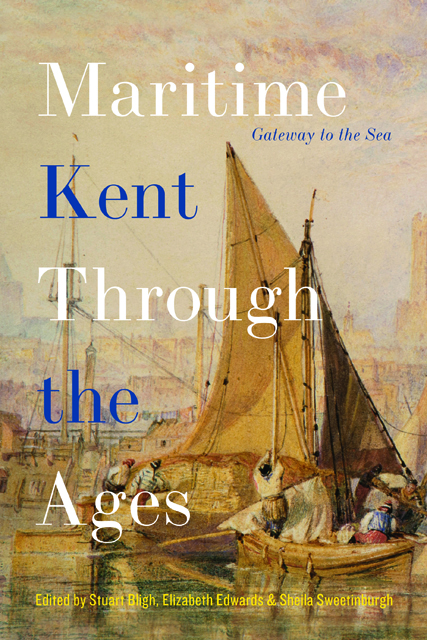6 - Kent’s Role in the National Defence Strategy, 1815 to 1865: Dockyards and Harbours in the Age of Steam
Published online by Cambridge University Press: 20 December 2023
Summary
Kent has been on the front line for defence and offensive operations for over two thousand years. It is the obvious coast for both an offensive springboard into Europe and an invasion of England, with the rich countryside and national magazines able to support an invading army marching on London. If the great fortress at Dover was an obvious focal point for national defence, the other ports of the Kentish coast were equally important and exposed to invaders from the Scheldt Estuary.
The threat to national security in the age of sail peaked between 1793 and 1815 as Revolutionary and Napoleonic France occupied and incorporated the Low Countries, the Austrian Netherlands (modern Belgium) and Holland, exploiting their naval facilities and infrastructure to prepare for an invasion of south-eastern England and the total destruction of the British state. Between 1803 and 1805 Napoleon assembled a hundred thousand strong Grand Army around Boulogne, relying on shipping from the Scheldt, based at the Dutch port of Vlissingen (Flushing) for larger transports. In response Britain blockaded the hostile coast, using a fleet based at the Nore, Deal and Dover. On shore new fixed defences including Martello towers were built, to delay the invaders and to support a communications infrastructure to signal for support. A large garrison of regular troops, backed by local militia and volunteer units, would engage any French troops that reached the shore. The scale of the shore defences was such that Napoleon would need a very large army to achieve his ambition, one that could not slip across the English Channel without being detected, and destroyed, by the Royal Navy.
The strength of the navy, based at Kentish dockyards and anchorages, meant that Napoleon never made the attempt, although, in truth, his invasion had been a bluff. The army at Boulogne was used to conquer Austria and Prussia, not Britain. Napoleon had hoped the threat of invasion alone would be enough to bring the British to terms. Instead it galvanised national resistance, sharply increasing voluntary soldiering, and enabling the government to increase the tax burden to fund a powerful fiscal military state.
- Type
- Chapter
- Information
- Maritime Kent through the AgesGateway to the Sea, pp. 149 - 168Publisher: Boydell & BrewerPrint publication year: 2021

